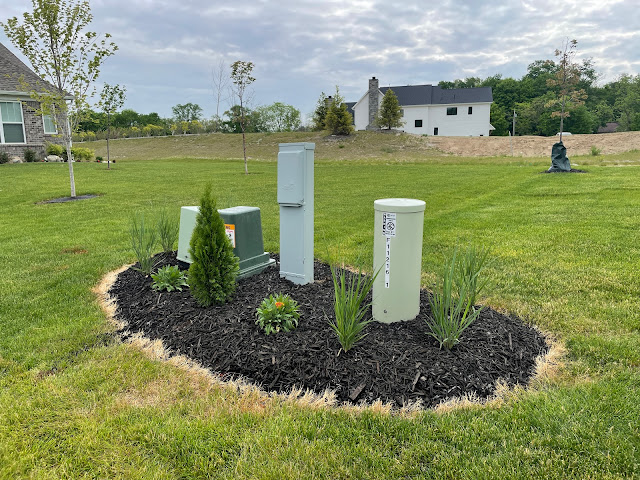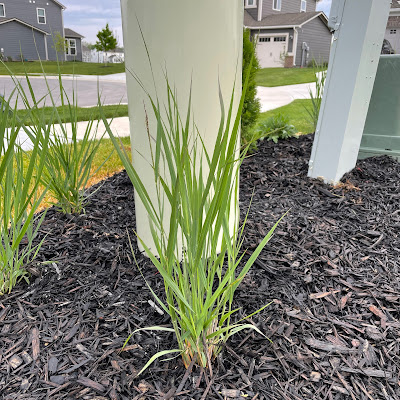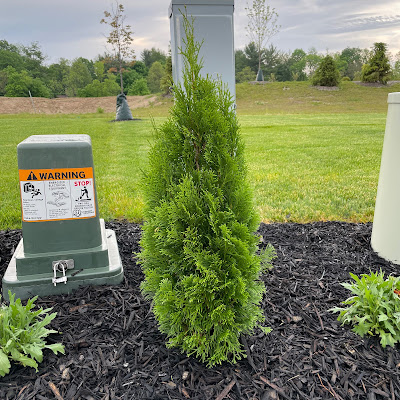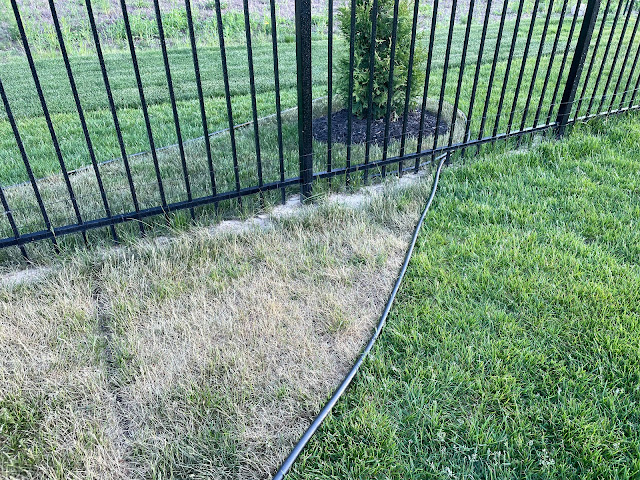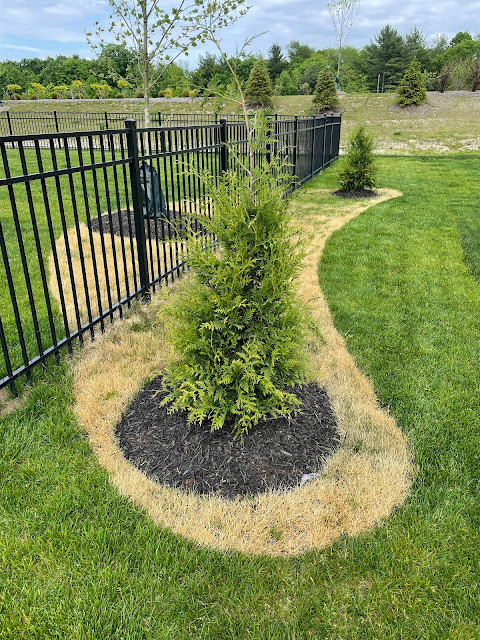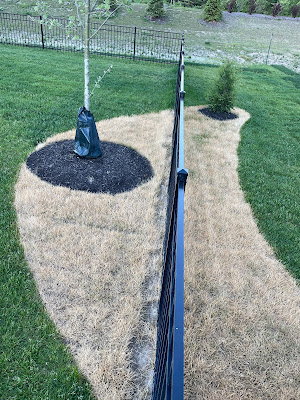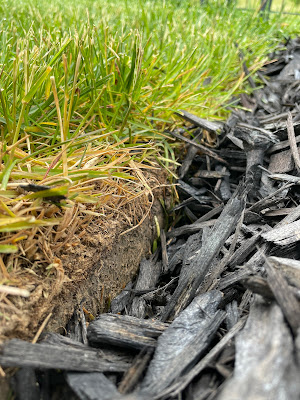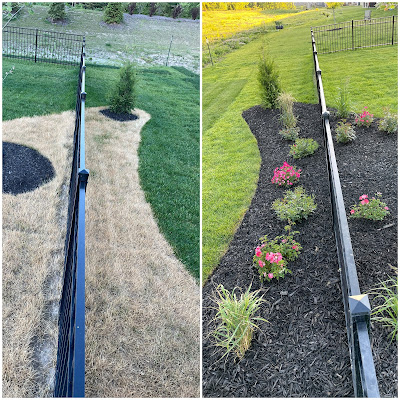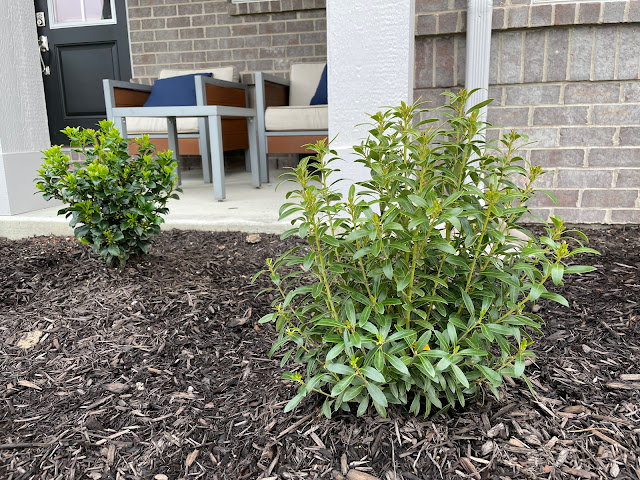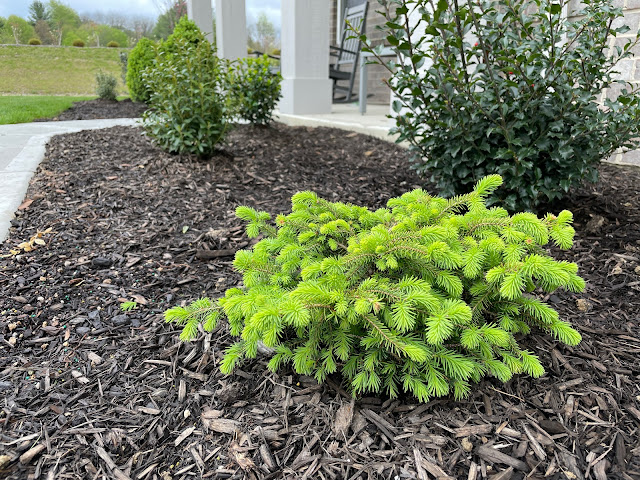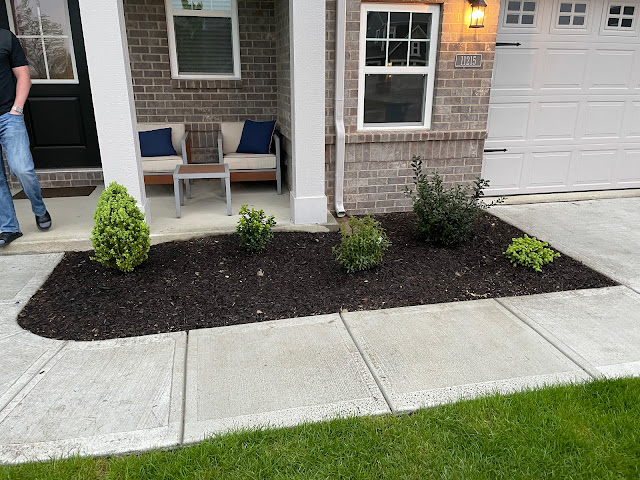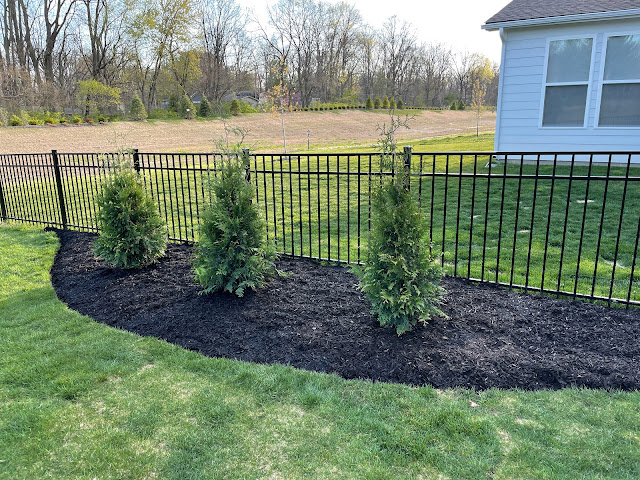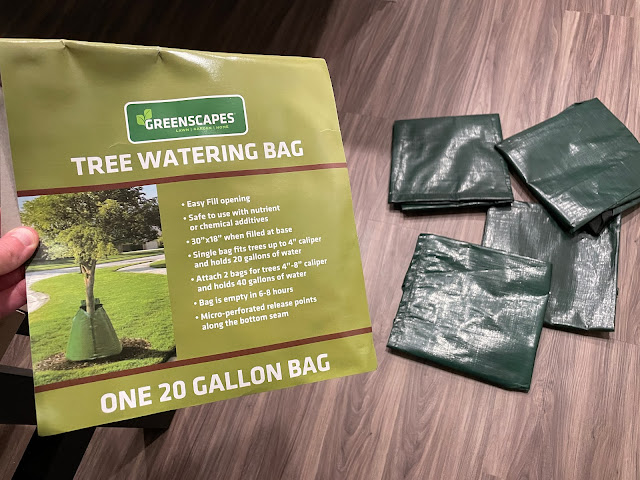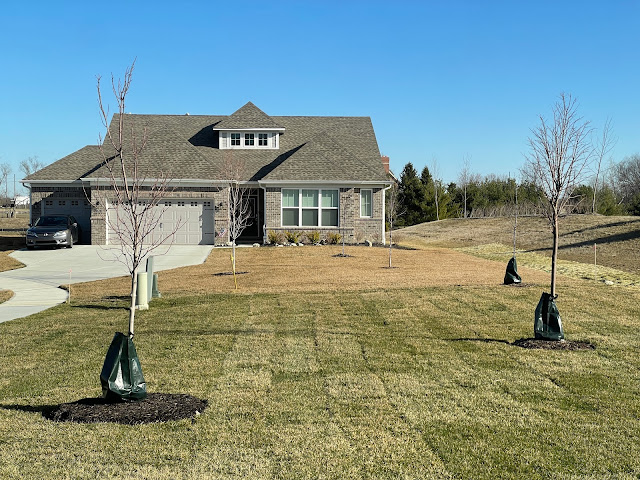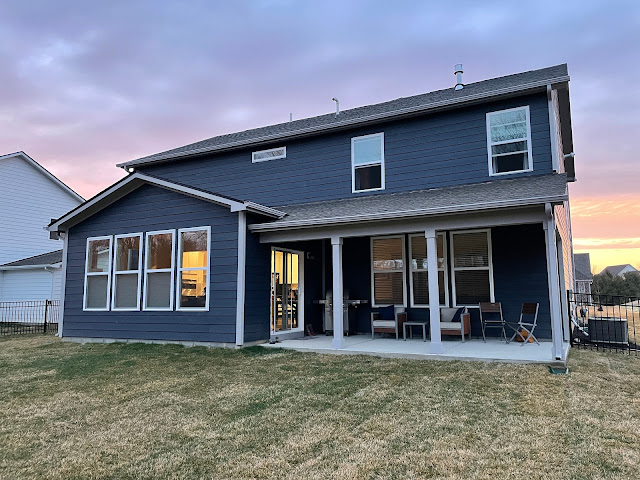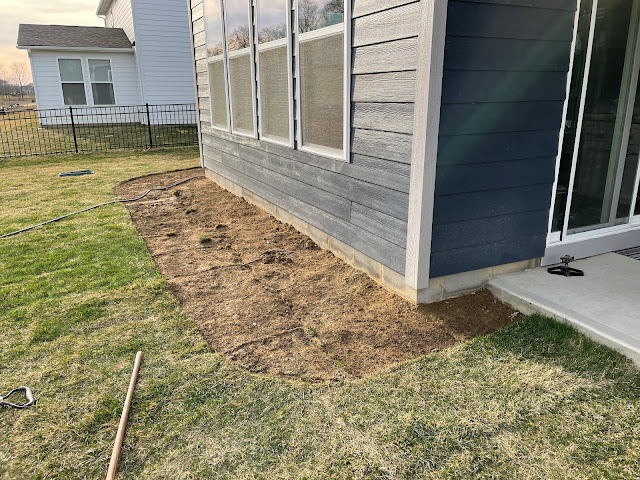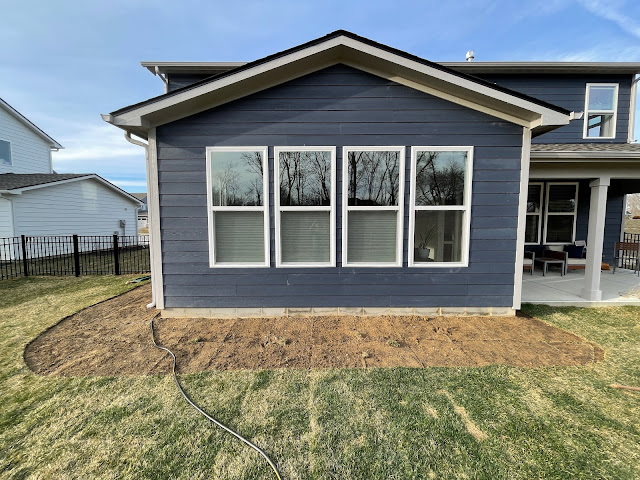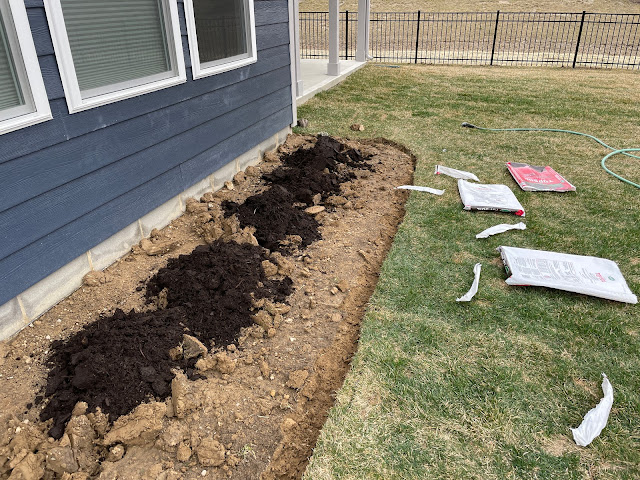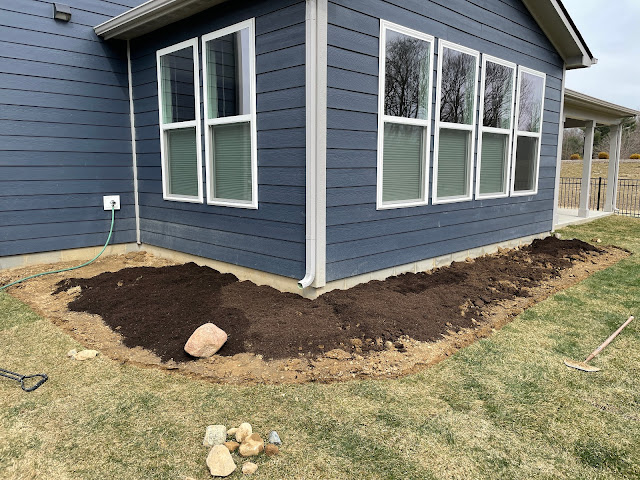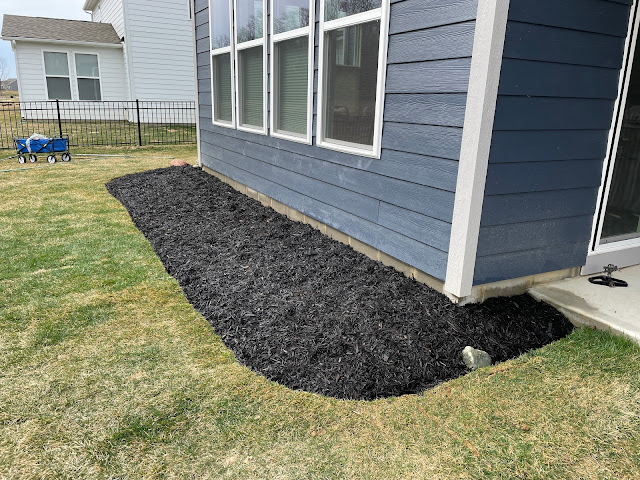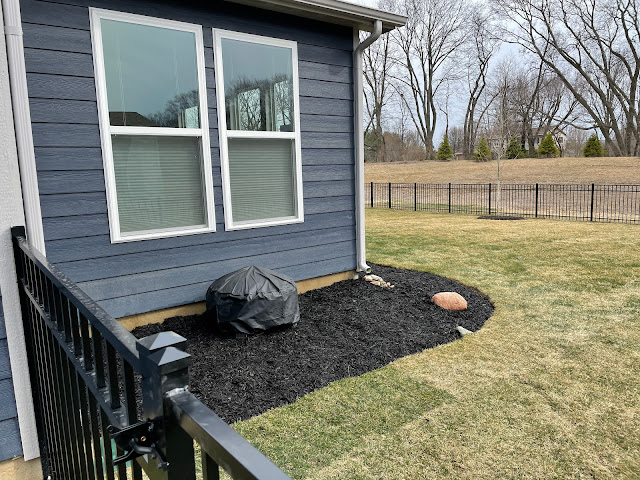I'm no stranger to hiding utility boxes with plants to not only make it more attractive but also make it easier to mow around. Before I did this utility box landscaping my neighbor said he was coming out with scissors to cut the grass in between the power box and internet box in the front yard.
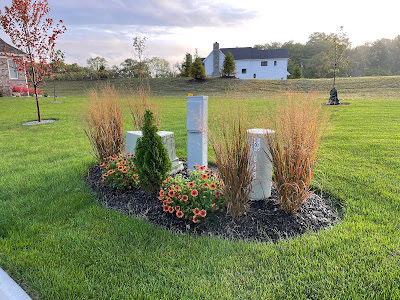 |
| Here is an After photo from October |
At our old house, I had a great utility box combination of feather reedgrass, coneflower, iris, and asters. I wanted to try something a little different here because all of those plants die to the ground in the winter and only do a good job hiding the utility boxes for 7 months out of the year. So I wanted to do something evergreen this time but I didn't want to have to wait years for it to grow either.
My compromise was to plant one emerald green arborvitae in the front that will eventually get 4 feet wide and hide most of the boxes from the front view, but in the meantime I wanted to hide the boxes from the side so I used one of my favorite ornamental grasses 'Northwind' switchgrass.
I also got a few drought tolerant flowers called Gaillardia aristata 'Spintop Copper Sun' that won't really get tall enough to hide anything but they are blooming like crazy and don't need a lot of water.
I started by rounding up the grass in the shape of the bed using a hose as a guide for the shape. I waited about a week for the grass to fully die and added a very thick layer of mulch. I called 811 before the dig to mark the utility lines, but since my mulch was so thick I actually didn't even dig into the ground I just pushed the mulch aside, added topsoil and the plants are all planted above the clay soil in nice mounded topsoil and surrounded by mulch.
I don't have anything in the back yet and I'd still like to add some coneflower, but for now at least I don't have to mow between the boxes and it looks a little better. The plants are so small that they aren't completely hiding anything really, not yet anyway.
